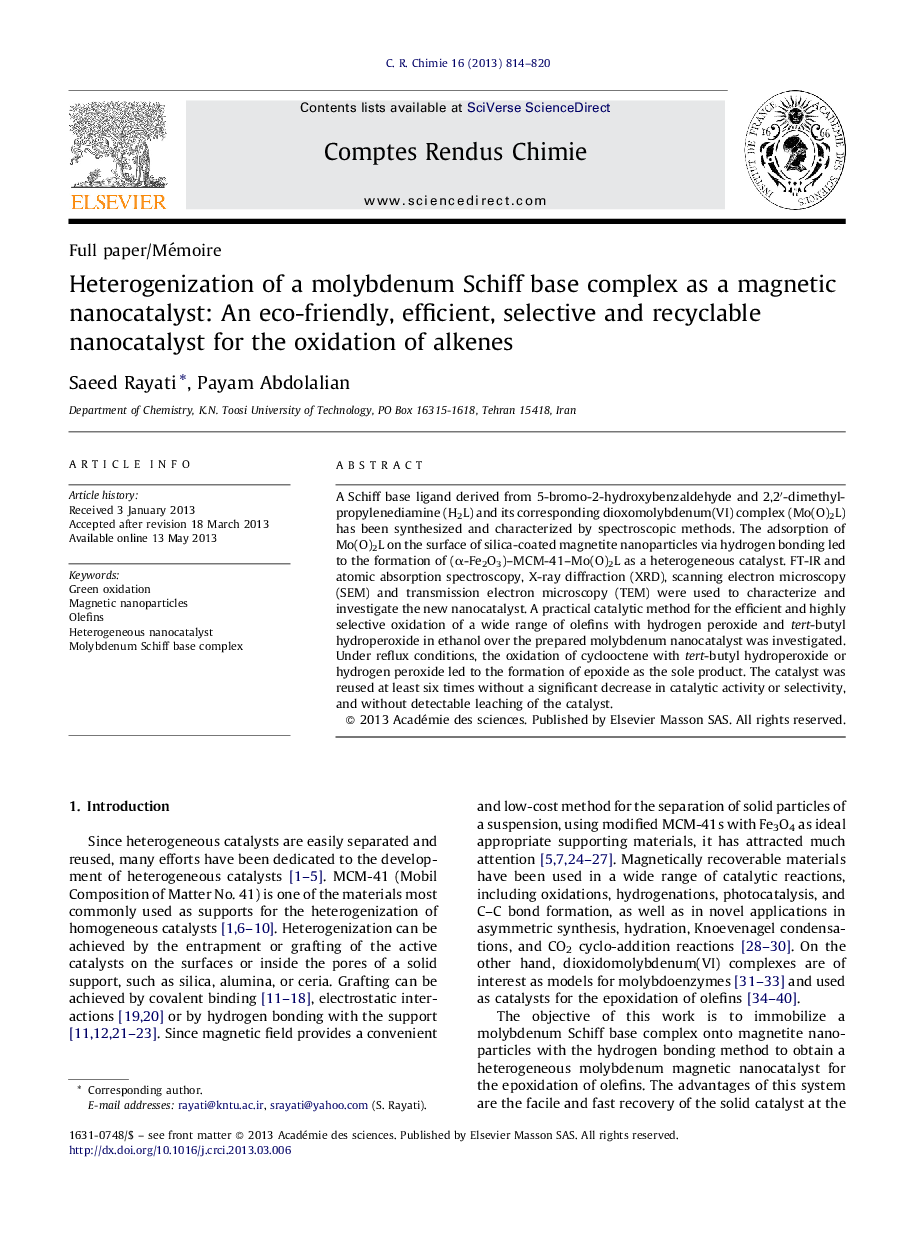| Article ID | Journal | Published Year | Pages | File Type |
|---|---|---|---|---|
| 170607 | Comptes Rendus Chimie | 2013 | 7 Pages |
A Schiff base ligand derived from 5-bromo-2-hydroxybenzaldehyde and 2,2′-dimethylpropylenediamine (H2L) and its corresponding dioxomolybdenum(VI) complex (Mo(O)2L) has been synthesized and characterized by spectroscopic methods. The adsorption of Mo(O)2L on the surface of silica-coated magnetite nanoparticles via hydrogen bonding led to the formation of (α-Fe2O3)–MCM-41–Mo(O)2L as a heterogeneous catalyst. FT-IR and atomic absorption spectroscopy, X-ray diffraction (XRD), scanning electron microscopy (SEM) and transmission electron microscopy (TEM) were used to characterize and investigate the new nanocatalyst. A practical catalytic method for the efficient and highly selective oxidation of a wide range of olefins with hydrogen peroxide and tert-butyl hydroperoxide in ethanol over the prepared molybdenum nanocatalyst was investigated. Under reflux conditions, the oxidation of cyclooctene with tert-butyl hydroperoxide or hydrogen peroxide led to the formation of epoxide as the sole product. The catalyst was reused at least six times without a significant decrease in catalytic activity or selectivity, and without detectable leaching of the catalyst.
Graphical abstractA practical catalytic method for the efficient and highly selective oxidation of a wide range of olefins with hydrogen peroxide and tert-butyl hydroperoxide in ethanol over the prepared molybdenum nanocatalyst was investigated.Figure optionsDownload full-size imageDownload as PowerPoint slide
